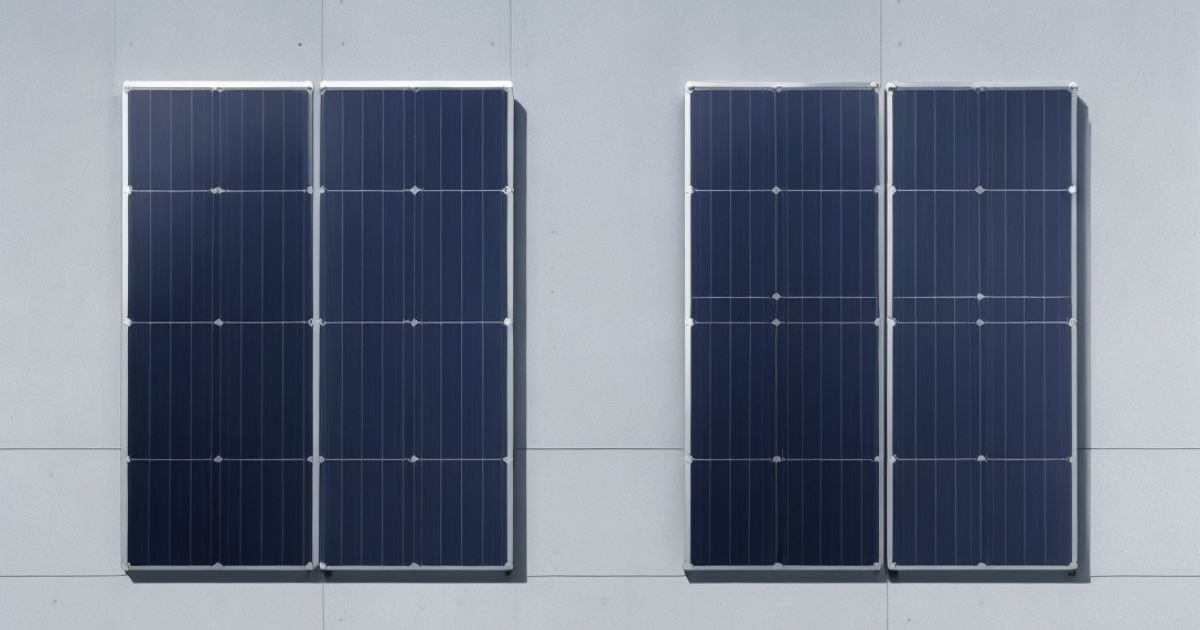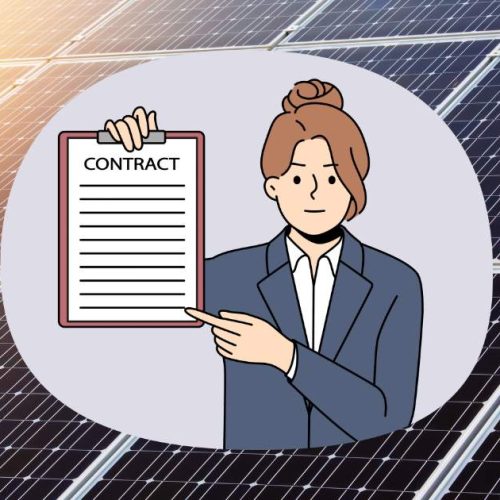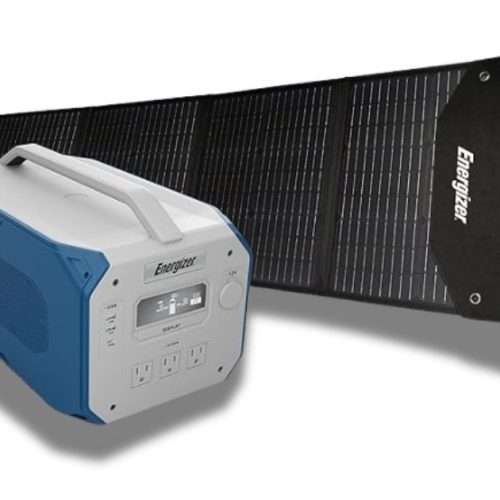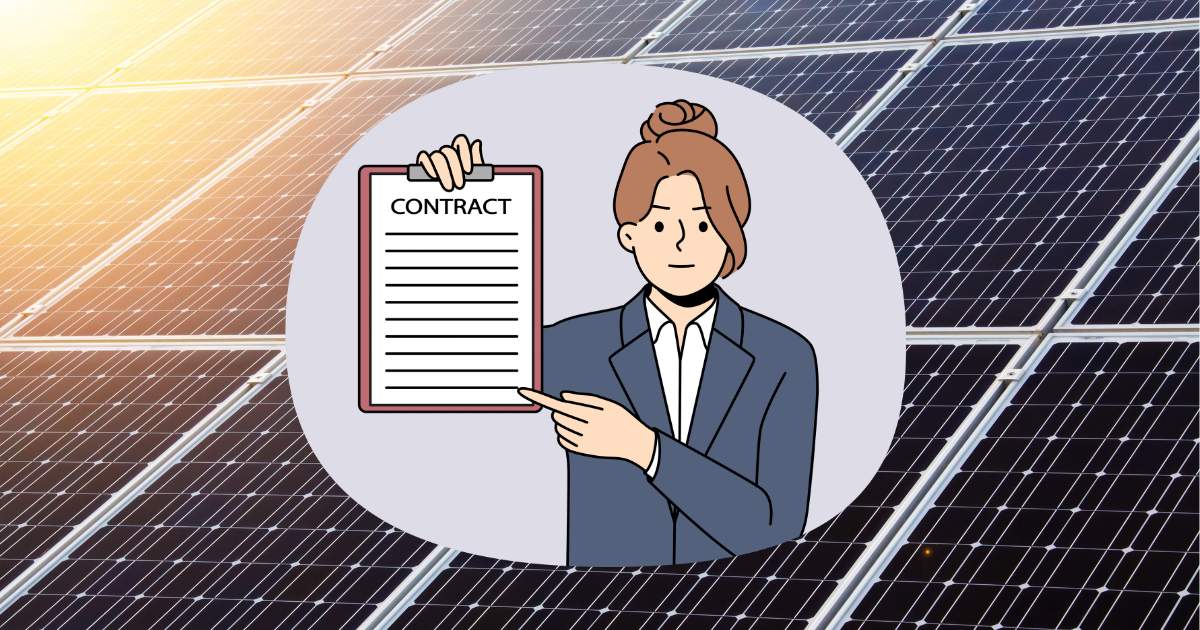In today’s environmentally conscious world, solar panels have become a popular choice for generating renewable energy. How to know if solar panels are working is important to ensure you maximize their benefits In this blog guide, we’ll go over several methods to determine if your solar panels are working optimally.

How Solar Panels Work:
- Solar panels consist of photovoltaic cells that convert sunlight into electricity through the photovoltaic effect.
- When sunlight hits the solar panel, the photovoltaic cells generate direct current (DC) electricity.
- An inverter then converts the DC electricity into alternating current (AC), which is used to power household appliances and electronics.
- Excess electricity can be stored in the battery through a process known as net metering.
How to Know if Solar Panels Are Working:
- Monitor Inverter: Displays real-time data of the inverter such as power output and voltage. Any significant deviation from the expected value may indicate a problem with the solar panel.
- Check Electricity Bills: A significant reduction in electricity bills after installing solar panels indicates that they are working effectively and producing electricity.
- Visual inspection: Inspect the solar panels regularly for any signs of damage, dirt, or shading. Clear panels can produce electricity by ensuring maximum sunlight absorption and efficiency.
- Online Monitoring System: Many solar panel systems come with online monitoring platforms that allow homeowners to track their system’s performance remotely. These platforms provide a detailed inside view of energy production and potential issues.

How to Test if a Solar Panel is Working:
- Sunlight Test: During daylight hours, place a hand on a solar panel. If it’s working properly, you should feel warmth as the panel converts sunlight into electricity.
- Voltage test: Use a multimeter to measure the voltage output of the solar panel. A functioning panel usually produces a voltage within its specified range.
- Current test: Similarly, use a multimeter to measure the current output of the solar panel. Should conform to current panel specifications.
- Shade Test: Monitor the solar panels throughout the day to ensure they are not shaded by trees, buildings, or other obstructions. Shade can significantly reduce the efficiency of solar panels.
Common Signs of Solar Panel Issues:
- Decreased energy production: A sudden decrease in energy production compared to the previous month may indicate problems such as shedding, dirt build-up, or equipment malfunction.
- Fault Indicators on Inverters: Most inverters have fault indicators or error codes that signal possible problems with the solar panel system. Refer to the manufacturer’s manual for troubleshooting steps.
- Physical Damage: Cracks, hotspots, or discoloration on solar panels are signs of physical damage that can affect their performance. May require urgent repair or replacement.
Regular Maintenance Tips:
- Clean the panels: Clean the solar panels regularly with water and mild detergent to remove dirt, dust, and debris. Avoid using abrasive materials that can scratch the solar panel.
- Trim surrounding vegetation: Trim trees and bushes to prevent shading of solar panels, especially during sunlight.
- Professional Inspection: Contact a qualified solar technician for an annual inspection to identify any potential problems and ensure the system is working efficiently.
How to Test If Solar Panels Are Working
Solar panels are a significant investment, providing clean and renewable energy to your home or business. Ensuring they are working efficiently is critical to maximizing their benefits. In this guide, we’ll go over how to check if your solar panels are working, spot the signs they’re not working properly, test them without sunlight, and test their performance.
How Do You Test If Solar Panels Are Working?
Regularly testing your solar panels ensures that they are working properly and providing optimal performance. Here are some methods to test their effectiveness:
Use a Multimeter
- Safety First: Always prioritize safety by turning off the inverter and following all safety guidelines.
- Set the multimeter: Switch your multimeter to the DC voltage setting.
- Measure the voltage: Connect the multimeter to the positive and negative terminals of the solar panel.
- Compare Readings: Match the voltage reading to the specified open-circuit voltage (Voc) on the panel. If it is significantly lower, there may be a problem.
Check the Inverter Display
- General Operation Indicators: Most inverters have a display that shows if the system is working properly. Look for the green light or a “normal operation” message.
- Error code: If there is a red light or error code, refer to the inverter manual to diagnose the problem.
Monitor Solar Output
- Energy Monitoring System: Use an energy monitoring system or software to track your solar system’s output over time.
- Analyze data: Compare daily, weekly, and monthly production data with historical performance or expected output based on your location and system specifications.
Physical Inspection
- Visual Check: Inspect panels for visible damage, dirt, or debris.
- Wiring and connections: Ensure that all wiring and connections are secure and undamaged.

How Do You Know If Your Solar Is Not Working?
You need to identify when things aren’t working and fix problems immediately. Here are some signs that your solar panels may not be working properly:
Unusual Inverter Readings
- Error messages: If your inverter displays error messages or red indicator lights, there is a problem with your solar panels.
- Low or no output: Check if the inverter shows significantly reduced or no output.
Reduced energy production
- Compare with Past Data: Compare current energy production with past data. A noticeable decrease without a corresponding change in weather conditions may indicate a problem.
- Utility Bills: Expect utility bills to let you know if your solar panels aren’t generating enough power.
Physical damage
- Panel condition: Inspect the panel for cracks, chips, or other physical damage.
- Loose Wiring: Inspect for loose or damaged wiring and connection points.
Environmental Factors
- Shading: New obstructions such as tree growth or construction that create shadows can reduce panel performance.
- Dirt and Debris: Accumulation of dirt, leaves, or snow on the panel can block sunlight and reduce performance.
How do you test solar panels without the sun?
Testing solar panels without sunlight can be challenging, but it is possible to test using artificial light sources or specific test equipment:
Use a solar simulator
- Simulated sunlight: A solar simulator simulates sunlight, requiring you to test the panels in controlled indoor conditions.
- Accurate Measurement: This method provides accurate voltage, current, and efficiency readings.
Using Artificial Light
- High-intensity light bulbs: Use high-intensity halogen or LED bulbs as the light source.
- Measure the output: Connect a multimeter to the panel and measure the output. Although not as accurate as sunlight, it can indicate whether the panel is working.
Open circuit voltage test
- Measure voltage: Without sunlight, you can measure open-circuit voltage (Voc) using a multimeter.
- Compare with specifications: Check if the readings align with the panel’s specifications. Note that readings may be lower without direct sunlight.

How to Check Solar Panel Efficiency?
Maximizing your energy savings is essential to ensuring your solar panels are running efficiently Here are some common steps to test and maintain their effectiveness:
Calculate efficiency
- Power Output Measurement: Measure the actual power output of your solar panel using a multimeter or monitoring system.
- Measuring solar radiation: Measure solar radiation (energy per unit area received from the sun) using a pyranometer.
- Efficiency Formula: Calculate efficiency using the formula: Efficiency=(Solar Irradiance×Panel Area / Actual Power Output)×100
- Compare with rated efficiency: Compare the calculated efficiency with the panel’s rated efficiency to determine performance.
Monitoring System Data
- Use software tools: Many solar systems come with monitoring software that provides real-time data on performance and efficiency.
- Analyze trends: Review data regularly to identify any drops in efficiency and address them immediately.
Regular Maintenance
- Clean the Panels: Keep the panels clean of dirt, dust, and debris to ensure maximum sunlight absorption.
- Trim nearby plants: Prevent shading by trimming trees or shrubs that may block sunlight.
- Inspect for Damage: Regularly check for physical damage and promptly repair or replace damaged components.
Professional Inspection
- Annual Check-Up: Schedule an annual inspection by a professional solar technician to ensure optimal performance.
- Detailed Analysis: Professionals can provide a detailed analysis of your system’s efficiency and suggest improvements or repairs.
Conclusion
Make sure your solar panels are working at their best. Essential to maximize energy production and minimize electricity consumption. By following the procedures outlined in this guide and being alert for signs of trouble, you can enjoy the benefits of clean, renewable energy for years.
Regular testing and maintenance are crucial to ensure your solar panels are working efficiently and providing maximum benefits. Using the methods described above, you can monitor and maintain your solar system.
Identify and fix problems immediately and ensure your investment continues to produce clean and renewable energy for years to come. Remember, a well-maintained solar system not only saves money but also contributes to a sustainable future.









